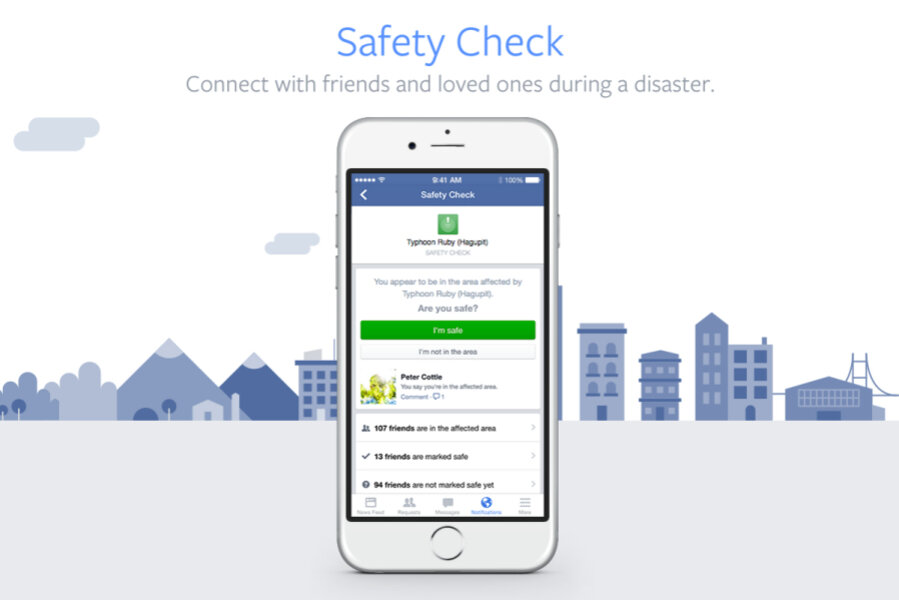Critics say Facebook’s Safety Check reveals a double standard
Loading...
In the wake of a terror attack in Paris on Friday, Facebook activated a feature it had only rarely used before. The Safety Check tool allowed people in and around Paris to post a status notifying family and friends that they were safe – a somewhat easier method than calling people individually.
That was the first time Facebook had ever activated Safety Check for a scenario other than a natural disaster.
In 2014, the company activated Safety Check in the wake of Typhoon Ruby (Hagupit), which stuck the Philippines, and earlier this year Safety Check was used after Tropical Cyclone Pam tore through the South Pacific region. The tool wasn’t officially launched until 2014, but Facebook began working on it following the tsunami and resulting nuclear disaster near Tokyo in 2011.
Alex Schultz, Facebook’s Vice President of Growth, wrote in a post on Saturday that the company has received lots of positive feedback about the ability to receive a notification that a friend is safe.
“I personally have received several from people I know and love and have felt first hand the impact of this tool,” Mr. Schultz wrote.
The Safety Check feature is pretty simple: when a user launches the Facebook app, it uses location services such as GPS and Wi-Fi to determine the user’s location. If the person is in an area that has recently been struck by a natural or human-caused disaster, Facebook offers a big green “I’m safe” button that, when pressed, automatically sends out an update to their social network. Safety Check also tallies how many friends are in the affected area, and how many have checked-in as safe so far. (There’s also a smaller button reading “I’m not in the area,” for those times when Facebook doesn’t get the user’s location quite right.)
The feature wasn’t used for any human-caused disaster until the Paris attacks last week. Some observers felt that it was unfair that Facebook activated the Safety Check for Paris and not, say, for Beirut, which was hit the day before with a double suicide bombing claimed by ISIS.
“Happy to see @Facebook using safety check-in, but can't escape the fact that it wasn't used in #Beirut or other non-Western active crises,” one Twitter user wrote.
Facebook says it will expand the Safety Check tool’s use going forward, based on the feedback it’s received.
“We chose to activate Safety Check in Paris because we observed a lot of activity on Facebook as the events were unfolding,” Schultz wrote in his post. “This activation will change our policy around Safety Check and when we activate it for other serious and tragic incidents in the future. We want this tool to be available whenever and wherever it can help.”






